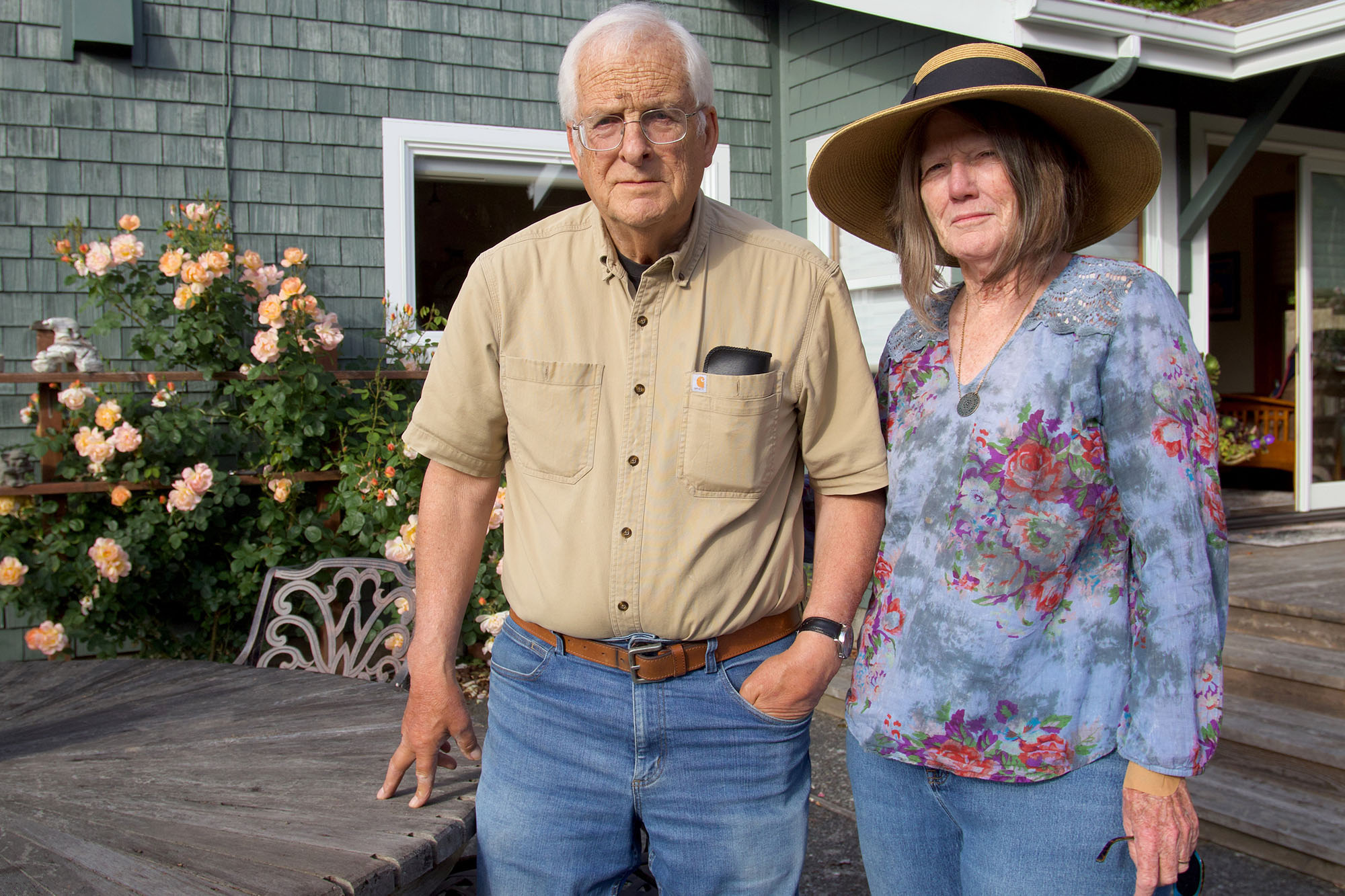
Sonny Le recalls the first time in his career as a medical interpreter that he thought he was going to faint. The Oakland-based Vietnamese translator was in a hospital at an appointment with a client when a labor and delivery care team paged him to rush across the complex to the operating room. “’Put this on!’, they told me. ‘There’s been a complication. You’ve got 10 seconds to tell her she’s getting an emergency c-section,’” he said.
Medical interpreters usually aren’t brought into life-and-death emergencies, but they do provide a vital service in all types of health care events. In most cases, when a patient doesn’t speak the same language as the provider, a medical interpreter is assigned to meet the patient at the front desk, help navigate the building, and sit in on the session with the health professional. Interpreters help share some of the most important words a person can hear or speak in their entire lifetime. Good news, bad news, or no news — interpreters play an important role in ensuring patients and families understand and can communicate about their health care.
A swath of laws, beginning with the 1964 Civil Rights Act, have stipulated that people must have “meaningful access” to the translation and interpretation services they need to make informed decisions about their care. California’s statutes on language access in medical care were updated as recently as two years ago, when former Governor Jerry Brown approved SB 223, which adds qualification criteria for interpreters and requires patients to be informed about how to access language services.
Essential Services for Patients with Limited English
These services are vital in California, where virtually all patients with limited English proficiency struggle to find providers who share their language, according to recent research from the UCLA Latino Policy & Politics Initiative (PDF). The problem is more acute for patients in rural areas. Linguistic and cultural concordance — speaking the same language and living the same culture — is vital to assuring high-quality care for these groups. Harvard researchers reported (PDF) that care without concordance results in lower patient satisfaction scores across a wide variety of measures. Concordance correlates with better continuity of care and higher satisfaction scores, and it can affect patients’ choices about their care.
The obstacles to good care multiply when your culture or history isn’t understood in your environment. Le often works with older Vietnamese people who came to the US as refugees in the 1970s. Many grew up in an agrarian society, farming from childhood and speaking regional dialects. Explaining an MRI procedure and why it might be necessary — in the right dialect with the right regard for the person’s background — is a delicate challenge. “How do you explain those things? You can’t just say it’s a computer involving a huge magnet,” said Le. “That’s why it’s called interpretation, not translation. . . . You can’t say ‘thingy.’ You have to be precise.”
Le’s career in interpretation began in the 1980s, when he worked with refugee resettlement programs in San Francisco’s Tenderloin district, helping newly arrived Vietnamese, Cambodian, and Laotian people navigate social services. In the process he became an advocate and activist. His work included accompanying people to the doctor’s office and translating for them, leading him to gain formal certification with the California Healthcare Interpreters Association.
While having a skilled interpreter like Le to accompany patients is ideal, it isn’t always possible. A national survey of 4,586 hospitals found that only 56% offered linguistic or translation services in 2016. Solutions like machine-translated care notes and interpreters who attend patient visits by video can help, but they aren’t perfect. A video interpreter can’t offer help at the check-in desk or be in the exam room to read body language. Machine-translated visit notes bring the risk of mistranslations: Le recalls an instance when the notes presented the Vietnamese phrase for “the doctor will draw a blood sample” as “the doctor will paint a blood sample.” Mistakes like these can undermine a patient’s confidence in the care team. Some human medical interpreters can have challenges too if they have not had the necessary training or can’t meet performance standards.
As Need Grows, So Does Shortage
California faces a historic shortage in its health care workforce that exacerbates the problem of health care providers who don’t look like patients they’re serving. Without the right providers, culturally and linguistically concordant care will be more difficult to obtain in the safety net. Compounding the problem, a 2017 Health Affairs study found that data on race, ethnicity, and language is largely incomplete for patients in managed care plans.
Getting a better understanding of a patient’s culture is the first step. “There’s a ton of research on ‘Asian’ as a category,” said Joe Lee, training and technical assistance director at the Association of Asian Pacific Community Health Organizations, a Bay Area organization that represents more than 30 community clinics serving Asian and Pacific Islander communities across the US. “But there are over 50 ethnicities and 100 languages in that one word. So you might look at the number of Asian providers and patients and think it’s representative — but then you break it out, and you find that it’s not.”
The challenges aren’t just in Asian languages. In California, 38% of Medi-Cal patients identify as Latino, but only 5% of physicians do. The Latino Politics & Policy Initiative estimates (PDF) that in California, there are only 62 Spanish-speaking providers for every 100,000 Spanish-speaking patients with limited proficiency in English. There are 344 providers per 100,000 English-speaking patients. And the ratio of Spanish-speaking providers doesn’t account for the fact that a wide variety of different indigenous languages and dialects fall under the catch-all term “Spanish,” meaning that not all Spanish-speaking providers are able to speak with all Spanish-speaking patients.
Patient Experience Enhanced by Ability to Speak Their Own Language
“In order for community health centers to thrive and expand and provide care and access, these providers need to be able to be like the people they’re treating,” said Eddie Chan, PharmD, president and CEO of North East Medical Services (NEMS), a San Francisco-based community health center that is the nation’s largest clinic focused on Asian communities.
NEMS has made language access a key part of its strategy for providing culturally and linguistically appropriate care. It has full-time, in-house interpreters and translators who cover appointments, notes, instructions, and pharmacy. Its protocol is to always ask patients for a preferred language and to offer phone menu trees in that language. Chan stresses how much this positively affects the patient experience: “Not just the provider but the staff around them [should be culturally competent] so that they feel that they’re part of the community. They’re able to express their illness much more easily.”
Patients value providers who can communicate with them in their preferred language and express an understanding of their culture. Right now, California is struggling with a shortage of both interpreters and linguistically competent providers.
“Let’s start with our youth,” said Lee. “Let’s raise awareness of all the primary care and behavioral health professions where you can make money, do good work, and care for community… Federally Qualified Health Centers serve 28 million people across the country. These can be employers of choice.” Until the pipeline catches up, patients will continue to depend on interpreters to obtain care. As California’s population continues to become more diverse and grow older, the need for multilingual health care is only going to increase.
Authors & Contributors

Heather McLellan
Heather McLellan is senior content strategist at Google. Before joining Google, Heather worked as an editorial assistant at CHCF. Heather has worked as a freelance writer and editor for clients including Facebook, Zulily, and several video game studios. She served on the community action team of Planned Parenthood of Southwest and Central Florida, and as a Know Your Rights canvasser for the ACLU of Northern California. Heather graduated from the University of Aberdeen with an undergraduate degree in French and international relations, and has since completed independent courses in content management and web development.





